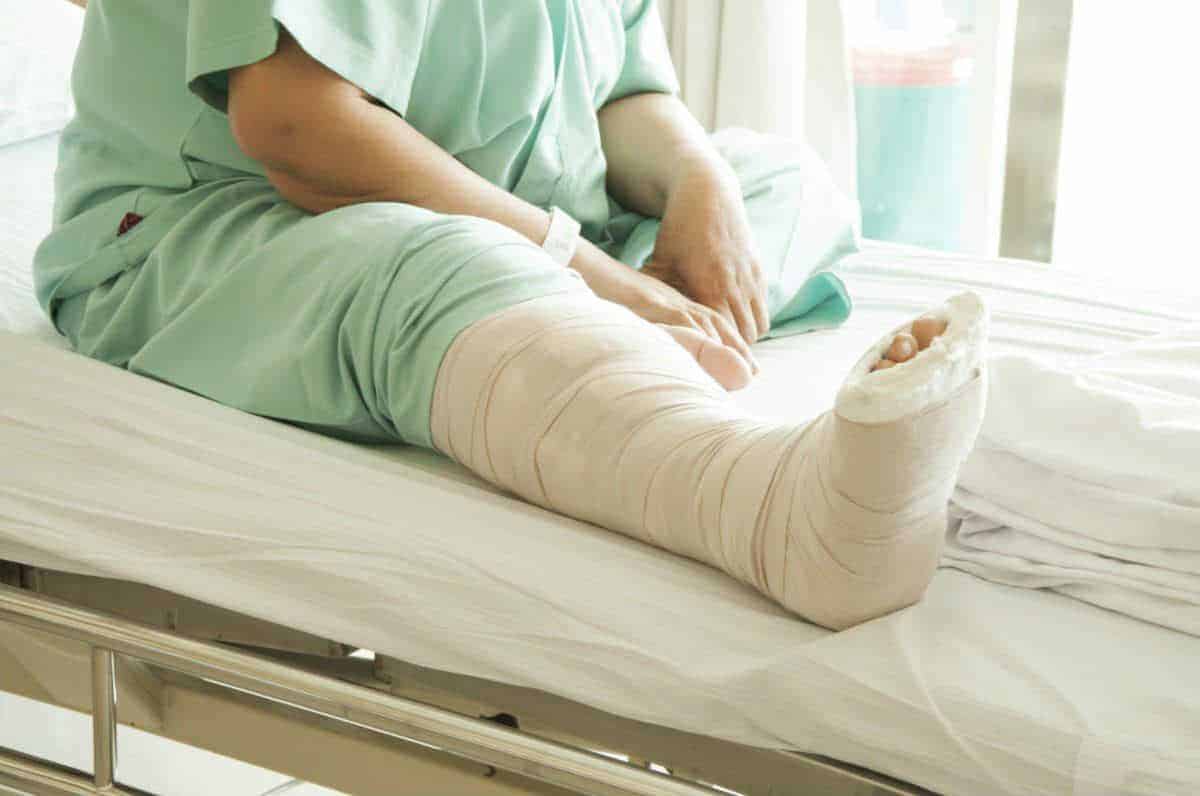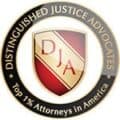Bone Breaks and Bone Fracture Lawyers in Chicago, IL
If you or a loved one have been the unfortunate victim of a Chicago auto accident and have suffered broken bones or a bone fracture, Willens & Baez want to help!
Many Chicago car accident victims suffer broken bones and fractures. They are generally more serious than a broken bone from a fall or sports accident due to the extreme force that hits a person’s body, often causing serious injuries. It is not unusual for a person that suffers a bone fracture in an auto accident to require surgery. When there are multiple fractures, the victim may require reconstructive surgery, which involves securing the bones with hardware.
If you or a loved one have been the unfortunate victim of a Chicago auto accident and have suffered broken bones or bone fractures, Willens & Baez want to help! We focus exclusively on representing individuals and their families who were injured by someone else’s negligence. We charge no legal fees, unless and until we succeed in obtaining a monetary recovery for you and your family.
Types of Bone Fractures
Even though bones are rigid, they do bend or give when an outside force is applied. If the force is too great, like the force from a car accident, they can break.
The severity of a fracture depends greatly on the amount of force that caused it. If the force is only slight, the bone may only crack rather than break all the way through. With extreme force, the bone can shatter.
Common types of bone fractures include:
- Stable fracture
- Compound fracture
- Transverse fracture
- Oblique fracture
- Comminuted fracture
A stable fracture is where the broken ends of the bone line up but are scarcely out of place. When a compound fracture occurs, part of the bone actually sticks out through the skin. A transverse fracture has a horizontal fracture line, whereas an oblique fracture has an angled fracture pattern. Finally, a com-minuted fracture is where the bone shatters into more than two pieces and is the result of high-impact trauma.
Types of Bone Injuries from Car Accidents
When a car accident victim suffers a broken bone or bone fracture, they are not minor injuries. They will always require medical attention and a period of time to heal. Many people are unable to return to work while they recover from their injury. That is why compensation will almost always include wage loss.
Common bone injuries from car accidents include:
- Skull fracture – these can cause concussion or brain laceration injuries where bleeding can occur inside the brain or outside of the head. A skull fracture can occur if the car is crushed from the top. These types of fractures can also occur if the person is ejected from the car and lands on his or her head at some distance. Any part of the skull can get fractured, and in case of a depressed fracture, when the parts of the bone push on the brain tissue, the chances of a brain injury can become very high.
- Back fracture – this type of spine injury will often cause lifelong problems because they affect spinal nerves and the spinal cord itself. They range in severity from mild pain and discomfort, to debilitating damage.
- Facial fractures – these can damage the eyes, causing vision problems either temporarily or permanently. A broken nose or jaw may leave a person disfigured or with nerve damage.
- Tibia and Fibula fractures – The lower leg is made up of two long bones – the tibia and fibula. The tibia is a triangular-shaped bone and carries the weight of your body. The fibula attaches the ankle and knee to the outside of the tibia. If the larger tibia bone becomes fractured, it is likely that the smaller fibula will fracture as well. However, the reverse may not be true. One of the most commonly reported injuries includes fracture of the lower bone at the ankle and the smaller bone at the knee.
- Rib fracture – cracked ribs are generally painful but are not easily treated. They require rest in order to heal and are often not diagnosed right away without an x-ray. Rib fractures are often a result of a serious accident. Particularly serious types of rib fractures are the ones that are displaced as they can puncture the lung and cause pneumothorax. In case of a penetrating wound, the person can also suffer compression of the lungs in the chest cavity. Another complication that can accompany a rib fracture is pneumonia.
- Femur fracture – this is one of the strongest bones in the body. They are usually very painful, can be difficult to repair, and may take a considerable amount of time to heal.
- Hip fracture – these can be very complicated as they often require surgery and lengthy recuperation. An elderly person with this type of bone injury may end up in a wheelchair and can even result in death.
- Clavicle fracture – this is an injury to the collar bone. These can be very painful and may result in limited motion of the arm and shoulder for months.
- Pelvis Fractures – are more common in motorcycle accidents. Pelvis fractures can also occur in car accidents, especially when a person is ejected from the vehicle. If the fracture is stable and the fragments are in place, then the person may only require pain management. However, in case of an unstable fracture, surgery may be required.
- Wrist Fractures – the wrist joint is made up of many fragile bones and any of these bones can become fractured in a car crash. Wrist fractures commonly occur when a person braces for an oncoming collision by holding on to the steering wheel or dash.
- Cranio-Facial Fractures – usually occur when a person strikes the windshield or dashboard. This can happen when he or she is not properly buckled up at the time of the crash.
- Arm Fractures – wrist fractures, arm fractures can also occur when a person braces for the impact of the crash.
- Facial Fractures – In a car accident, the person can also suffer fractures in the facial region – nose, cheekbones, orbit, mandible, and midface. Of these, midface fractures are considered the most serious of all, because they are often an indication of a serious injury elsewhere in the body. Facial fractures often leave permanent deformities.
- Spinal Fractures – Spinal fractures can occur anywhere from the base of the skull to the sacral area of the spine. If the fractures dislocate or swell, it can lead to disruption of the spinal cord. If the person suffers a spinal fracture that causes damage to the spinal cord, it can lead to quadriplegia. Spinal cord damage can also cause breathing difficulties and the person may require ventilator support. Damage in the thoracic spine region can cause paraplegia and bowel and bladder dysfunction. Lumbar spine fractures can cause bowel and bladder dysfunction.
- Lower Extremity Fractures – When a person uses a foot to brace for the impact, a variety of fractures in the lower extremities can result, depending on the position of the leg and degree of force. The person can suffer hip fractures, midshaft femur fractures, knee fractures, and ankle and foot fractures.
- Upper Extremity Fractures – It is common for a person to use the hands to brace for the impact, causing upper extremity fractures. The force of the impact on the outstretched arm can cause a fracture or dislocated shoulder.
Many of these broken bone injuries require a significant period of time to heal. Rehabilitation and therapy may be needed which is costly and time-consuming. Broken bones and bone fractures from car accidents can leave a person with lifelong side effects such as pain and discomfort and in more serious situations may leave a person disfigured or paralyzed. This is why it’s so important to contact a skilled Chicago broken bones attorney if you’ve been injured in this way.
Complications of a Broken Leg
When the tibia fractures, the two broken bones may not heal together completely. The patient often requires prolonged hospitalization. Complications associated with tibia fractures include compartment syndrome due to increased pressure in the restrictive compartments of the lower leg, missed torn artery, and injury to the peroneal nerve, which can lead to a foot drop. Foot drop can create an abnormal slapping gait. The compartment syndrome can cause severe restriction of oxygen to nerves and muscles below the fracture, leading to gangrene and amputation. In worse cases, this can cause death. Open fractures are more likely to develop complications because infections to the tibia area can be resistant to treatment. Even the casts that are used to hold the broken bone in place may increase the risk of compartment syndrome.
Treatment for Broken Bones
Depending on the location and severity of a fracture, treatment may involve wearing a brace to keep a broken bone in place or in severe cases, surgery followed by physical therapy. Surgery usually involves the use of metal plates and screws to hold the fragments in place to help healing.
It is important that broken bones heal in a good position to be able to bear weight like it did before the injury. This may require surgical treatment that involves placing pins to hold the bone in position and then using traction equipment to hold the alignment together. The patient may be confined to bed for a long time and the path to recovery is often long and difficult.
Types of Bone Fractures
- Hairline or stress fracture – a small crack in the bone that occurs in leg or foot bones.
- Buckle fracture – affects immature bones during childhood.
- Avulsion fracture – a part of the bone is separated from the main mass of the bone, also affecting the ligaments.
- Compound or open fracture – the skin is broken around the broken bone and such injuries are often prone to infection.
Compensation for Broken Bone Injuries
The blunt force trauma a person experiences in a car accident can cause significant damage to the human body.
Insurance companies make billions of dollars by collecting as much as they can in premiums from ordinary people, then paying out as little as possible when claims are made. Their tactics of deny, delay, defend have been a mainstay after an accident for many, many years.
If you or a loved one have been injured in a car accident, you should be receiving compensation for ALL of your benefits. An experienced Chicago broken bones lawyer at Willens & Baez will determine your fair settlement based on several factors; past and future medical bills, rehabilitation, lost earnings, loss of earning capacity, disfigurement, pain and suffering, disability, loss of a normal life and changes in your relationships with your loved ones. We determine this at the appropriate time, on your timetable, not in insurance company’s.
Compensation for Nasal Fractures From a Car Accident
Car accidents can cause a variety of injuries including facial fractures. It is believed that nasal fractures account for more than 50 percent of all facial fractures. It is a painful injury and can permanently change the physical appearance of the victim. These injuries are commonly caused when a high-impact force strikes the nose and breaks the bone. The nose is made up of two small rectangular bones that make the bridge of the nose. The rest of the nose contains cartilage, blood vessels, and nerves. Whenever any of these components get injured, it results in a nasal fracture as well.
Symptoms of Nasal Fracture
Nasal fractures are quite painful and it is usually not hard to find out that the person has suffered a nasal fracture. If you suspect that the victim of a car accident might have suffered an injury, seek emergency medical treatment. If the head was also impacted in the accident, then there are risks for a traumatic brain injury, hemorrhage, brain swelling, and other medical complications. In case the victim is experiencing severe headache, fluid drainage from the nose, or has trouble breathing, get him or her immediate medical treatment. Nasal fracture can cause a variety of symptoms including:
- blockage in one or both nostrils
- clear fluid discharge
- deformity of the nose
- tilting of nose bridge towards one side
- headache
- difficulty breathing or smelling
- difficulty talking
- pain in neck, face, or nose
- grinding feeling or sound when the nose is touched
- bruising, swelling, bleeding, or lacerations in the nose or around the eyes
Effects of Nasal Fractures
A person may experience some or all of the symptoms depending on the severity of the fracture. The consequences or long-term effects of a nasal fracture may not be immediately evident. Just like the case of other facial fractures, a nasal fracture may require dental work, oral surgery, or multiple cosmetic surgeries. Even after completing the medical treatment, the victim of a nasal fracture may experience recurrent headaches and loss of hearing. The victim may also have problems with sight and balance. Considering the long-term effects that a nasal fracture could have on a victim, it is extremely important to seek damages covering all medical and other related expenses. While calculating the amount to be recovered, you must take into account both the current medical bills and the estimated future medical costs and surgeries.
Common Car Accident Injuries: Pelvic Fractures
Pelvic fractures are a serious type of fractures that a person can suffer in a car accident. These fractures usually occur in high-speed crashes. Those who have osteoporosis or other health conditions that weaken the bones can suffer a pelvic fracture even in a low-impact collision.
Pelvic fractures are extremely painful and may make it difficult for the victim to walk. In severe cases, the fracture may be accompanied by internal bleeding or other complications. These injuries require immediate medical attention, and in more serious cases, the patient may require long-term treatment and physical therapy.
When a person suffers a pelvic fracture in a car accident, he or she may by faced with huge medical bills and the inability to return to work.
The Anatomy of the Pelvis
The pelvis consists of two small rings and a major ring. The smaller rings protect and support the internal organs including the intestines and the bladder. The fracture can be mild or severe. The fracture in the smaller rings is considered a mild fracture and a fracture in the major ring is considered a severe injury. The major ring can become fractured at multiple locations.
Common Symptoms of Pelvic Fracture
The person who suffers a pelvic fracture in a car accident will experience pain and discomfort in the pelvic area which worsens with movement. In addition, the patient may experience the following signs and symptoms:
- pain in the areas surrounding the pelvis, such as the abdomen
- inability to ambulate
- tingling and numbness below the waist
- trouble urinating
- unusual bleeding (in case of organ damage)
- pain and discomfort when standing
Diagnosis of Pelvic Fracture
A doctor may order imaging tests such as an MRI, a CT scan, or X-rays to assess the exact location and extent of the damage. Contrasting imaging tests may be required to diagnose damage to blood vessels and internal organs.
Treatment of Pelvic Injuries and Fractures
The treatment for pelvic injuries and fractures depends on the location and severity of the injury. A minor pelvic fracture will require minimal treatment and may heal with anti-inflammatory medications and bed rest. Usually, pelvic fractures take about 3-4 months to heal properly.
Patients with severe pelvic fractures may require surgery. The procedure involves the use of surgical hardware such as screws, plates, and pins to hold together the broken bones. Even after the bones have fused together, the patient may require physical therapy to regain mobility, flexibility, and strength. If a pelvic fracture is not treated properly, it can lead to long-term disability and pain. The patient may continue to experience pain and discomfort long after the fracture has healed.
Contact Willens & Baez for a FREE Consultation
Call Willens & Baez as soon as possible following your Chicago car accident. We want to help. We have the knowledge and experience you need on your side. Call us for your FREE consultation at (312) 957-4166 or fill out our online contact form. We do not charge for our services unless or until we collect compensation for our clients and/or their families.












